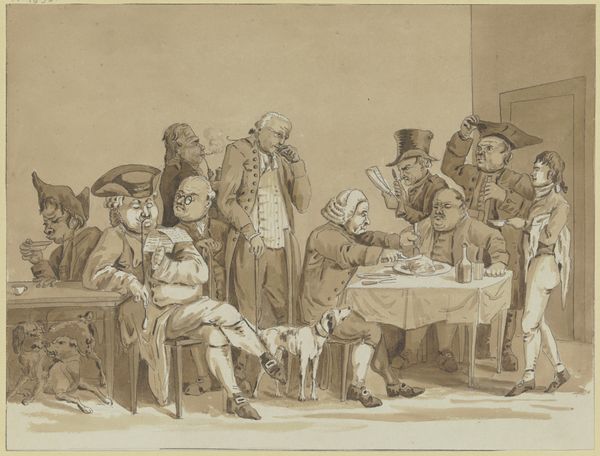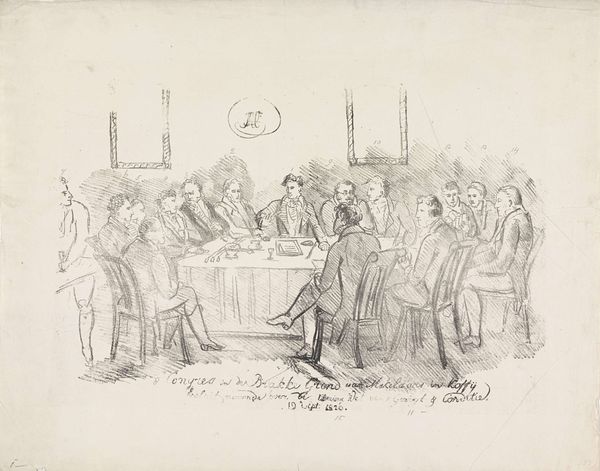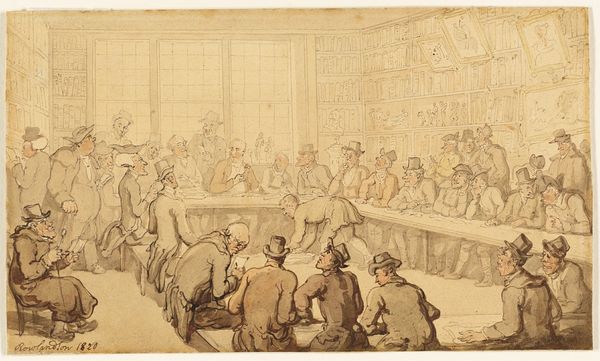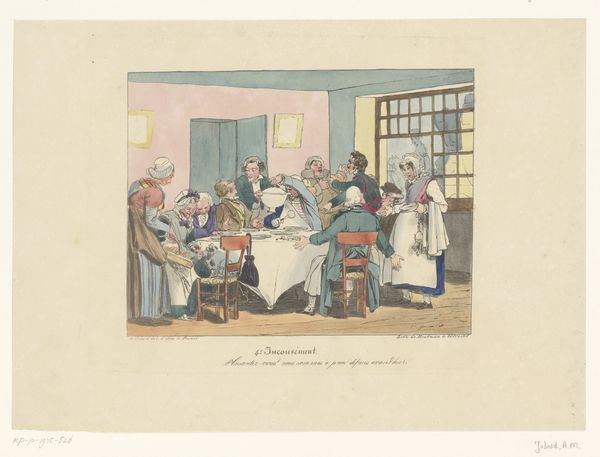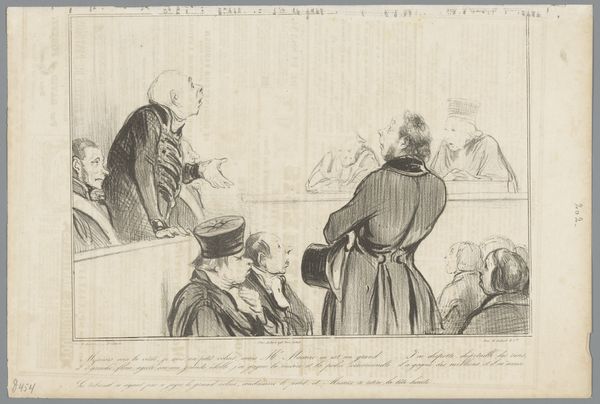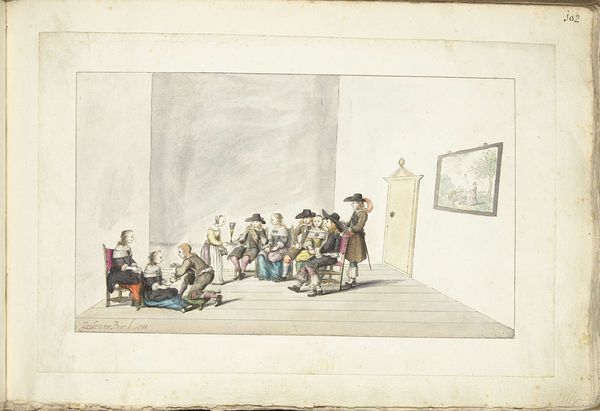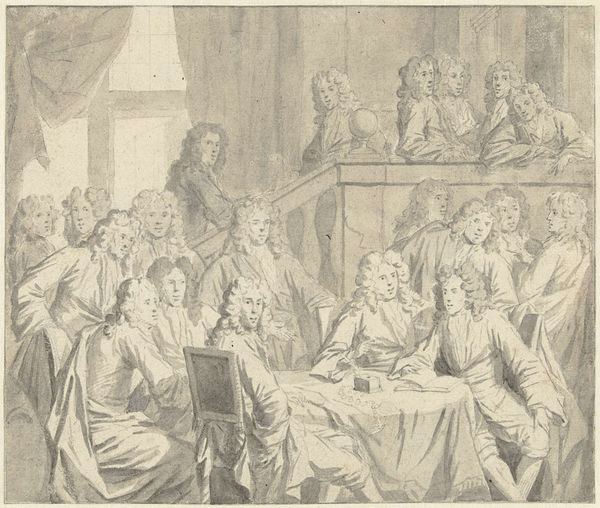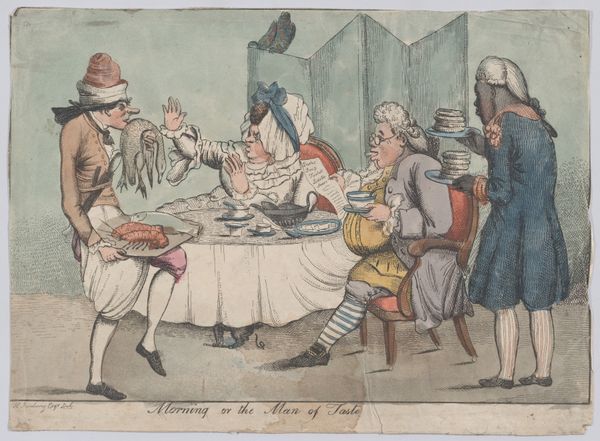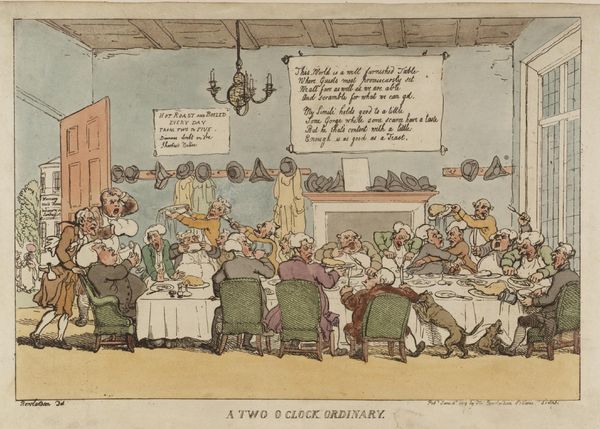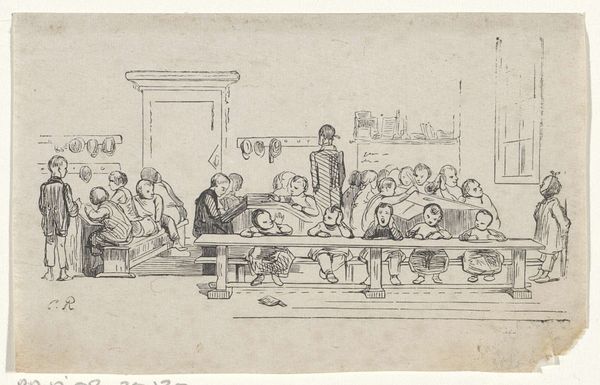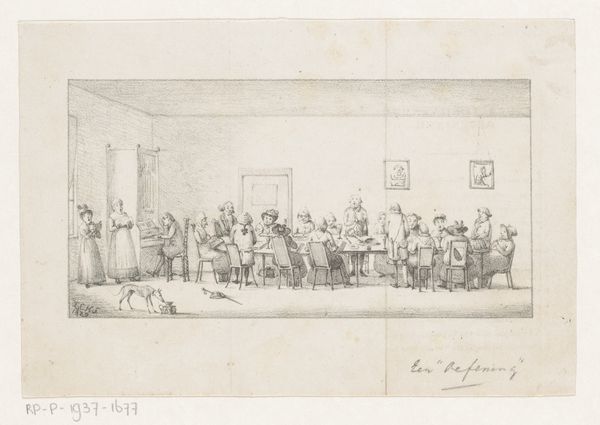
Dimensions: support: 219 x 348 mm
Copyright: CC-BY-NC-ND 4.0 DEED, Photo: Tate
Curator: Thomas Rowlandson’s drawing, "Two O’Clock Ordinary", captures a boisterous midday meal. It's held at the Tate, rendered in pen and watercolor wash on paper. Editor: Visually, it's quite a lively scene. The composition is dense, almost claustrophobic. I see a lot of activity, with a real sense of overflowing abundance, but also tension. Curator: Rowlandson was a master of social satire. The materials are modest, but allow for incredibly detailed rendering of social dynamics, commenting on the consumption and rituals of the time. Think about the cost of food and drink. Editor: It speaks volumes about gender and class. All of the diners are men, which is emphasized by their gestures and expressions. The social hierarchy is further defined by the labor of those serving the meal. Curator: Yes, the drawing captures a specific moment within the daily labor practices and economy of the period. Editor: A complex, uncomfortable glimpse into the past. It makes you think about who is included and excluded from the table.
Comments
tate 6 months ago
⋮
http://www.tate.org.uk/art/artworks/rowlandson-two-oclock-ordinary-t08551
Join the conversation
Join millions of artists and users on Artera today and experience the ultimate creative platform.
tate 6 months ago
⋮
This gentle satire shows a public eating house or 'ordinary', where a meal was provided at a fixed time and a set price. Needless to say, the atmosphere is chaotic. The diners eagerly attack the food, tussling with their neighbours to get their fill. A print from Rowlandson's drawing was published in 1811. There, the eating house is identified as Hornsey Wood House, which offered an 'ordinary' on Sundays at 2 pm: 'Hot roast and boiled from two to five/ Dinners drest on the shortest notice'. Gallery label, September 2004
